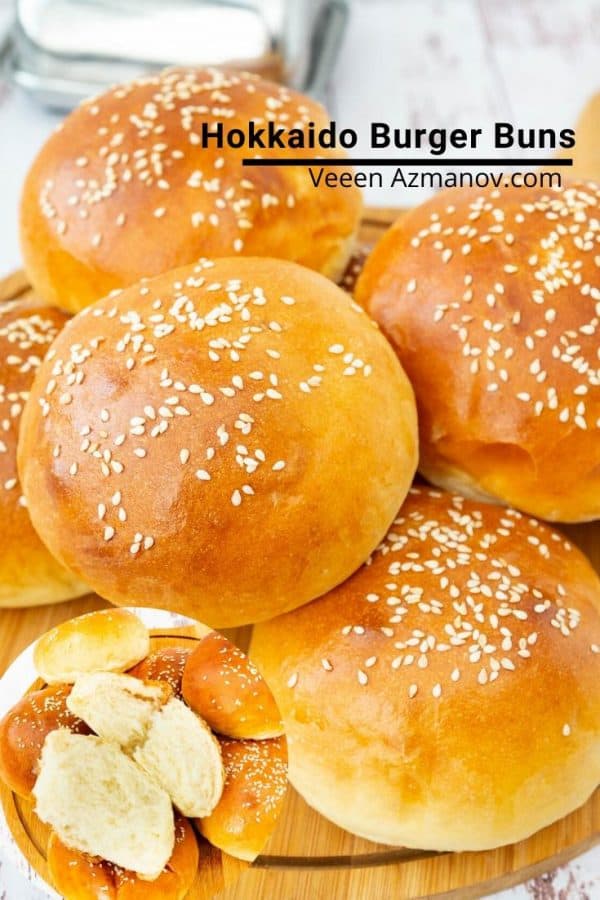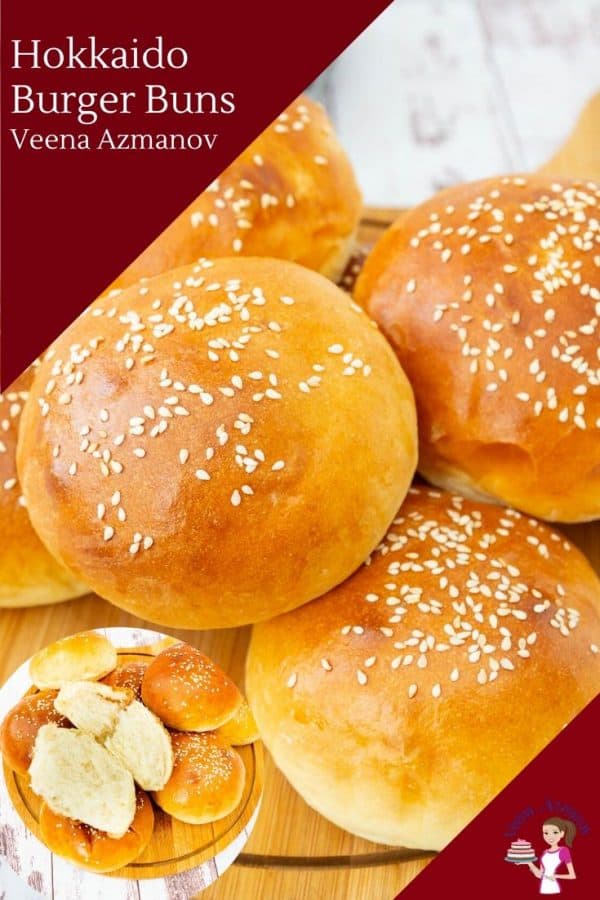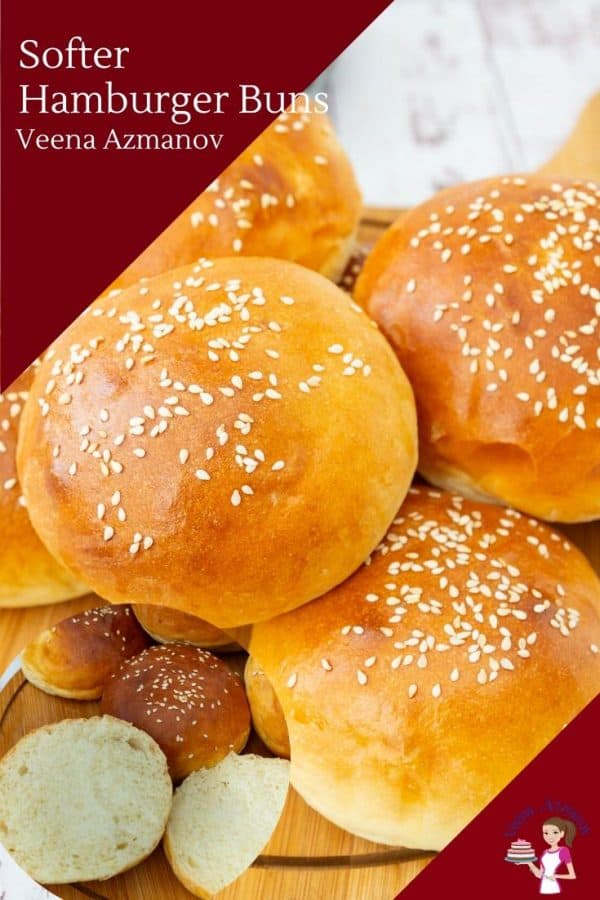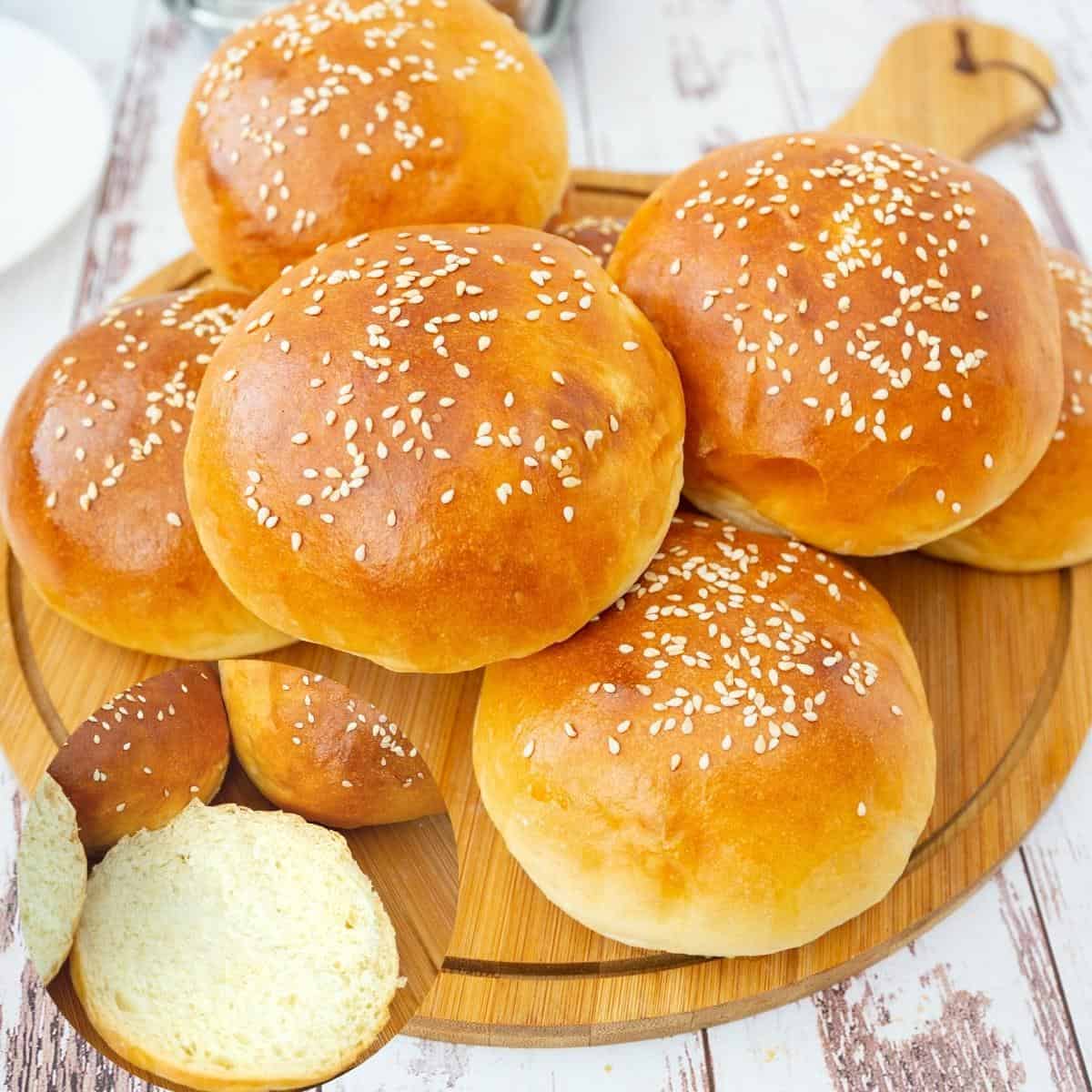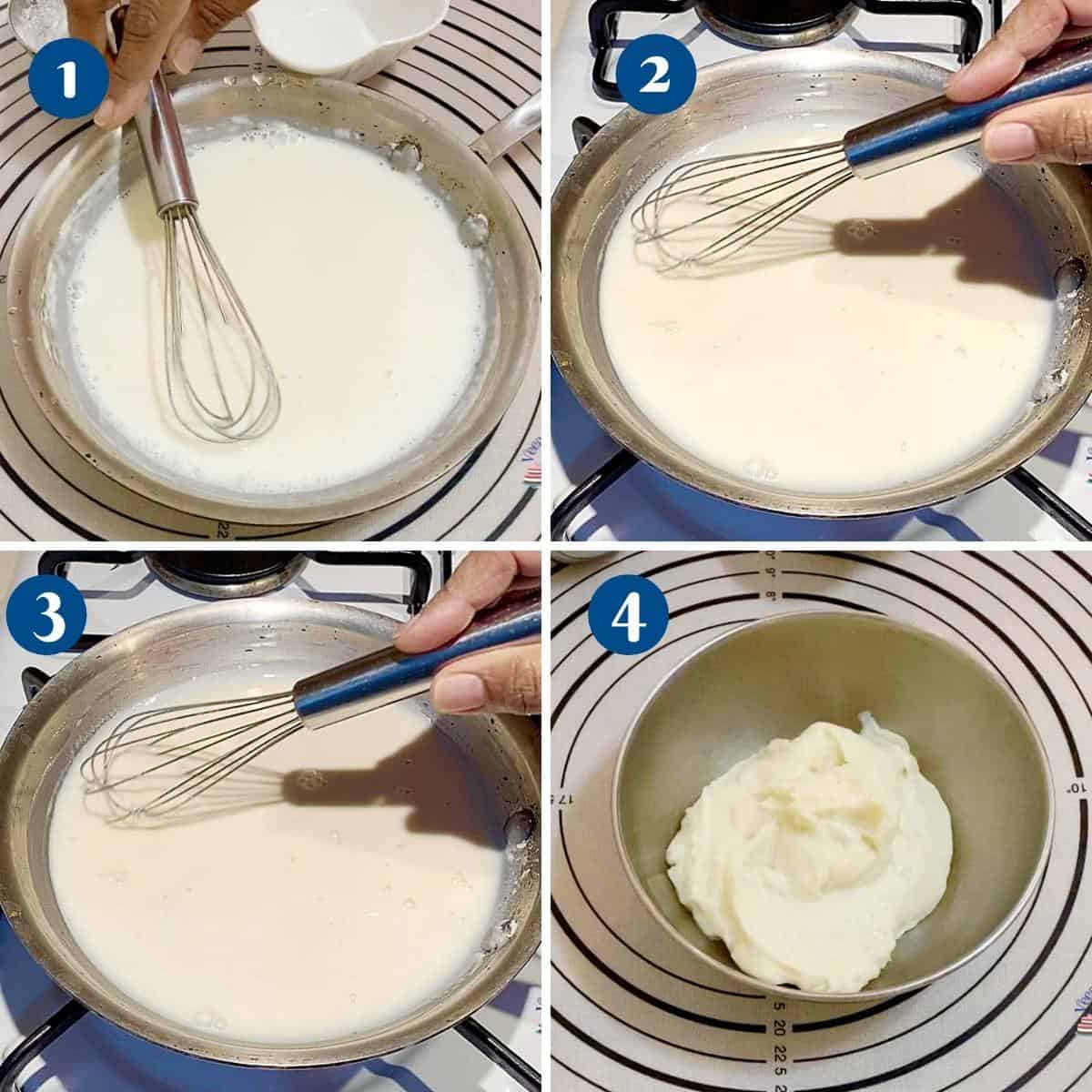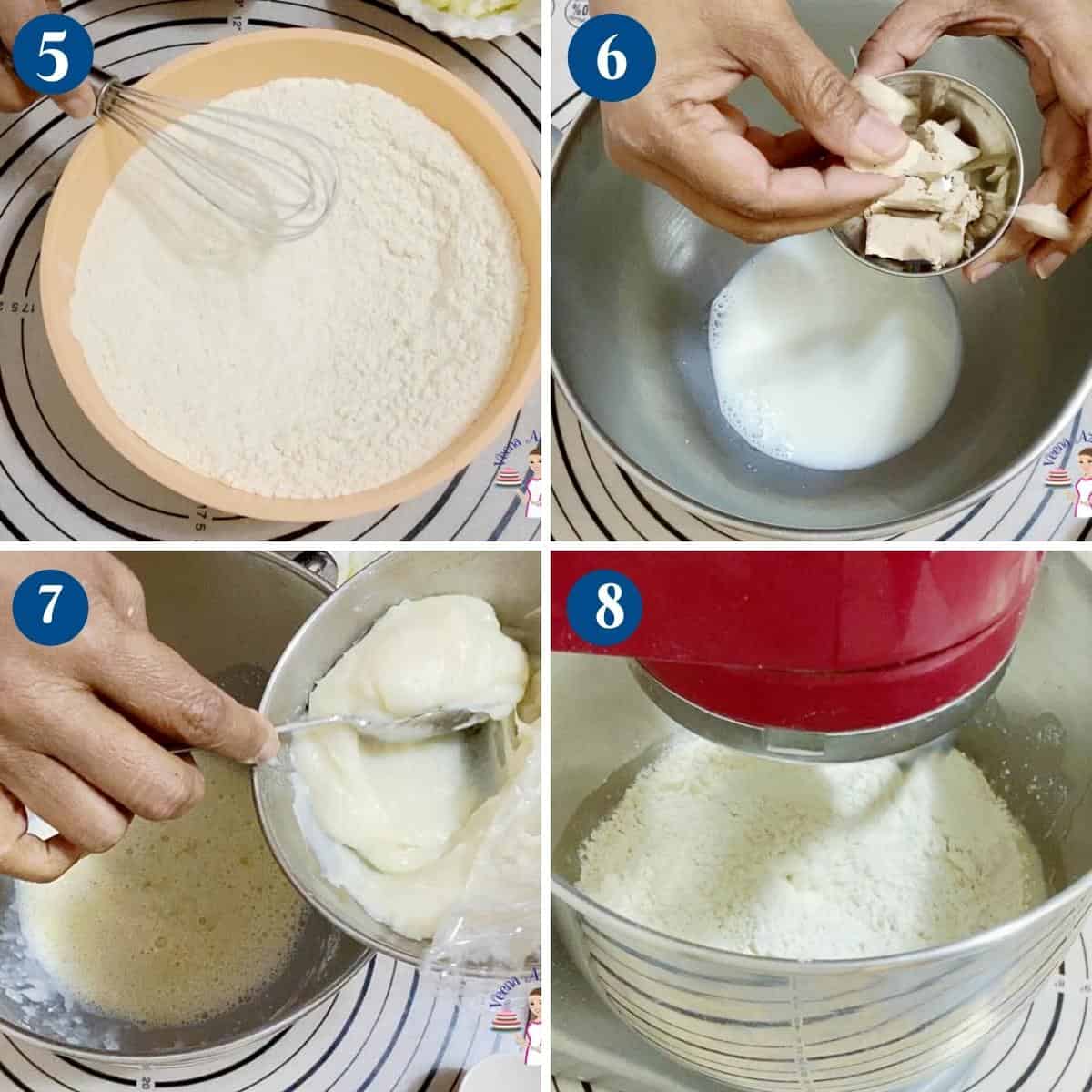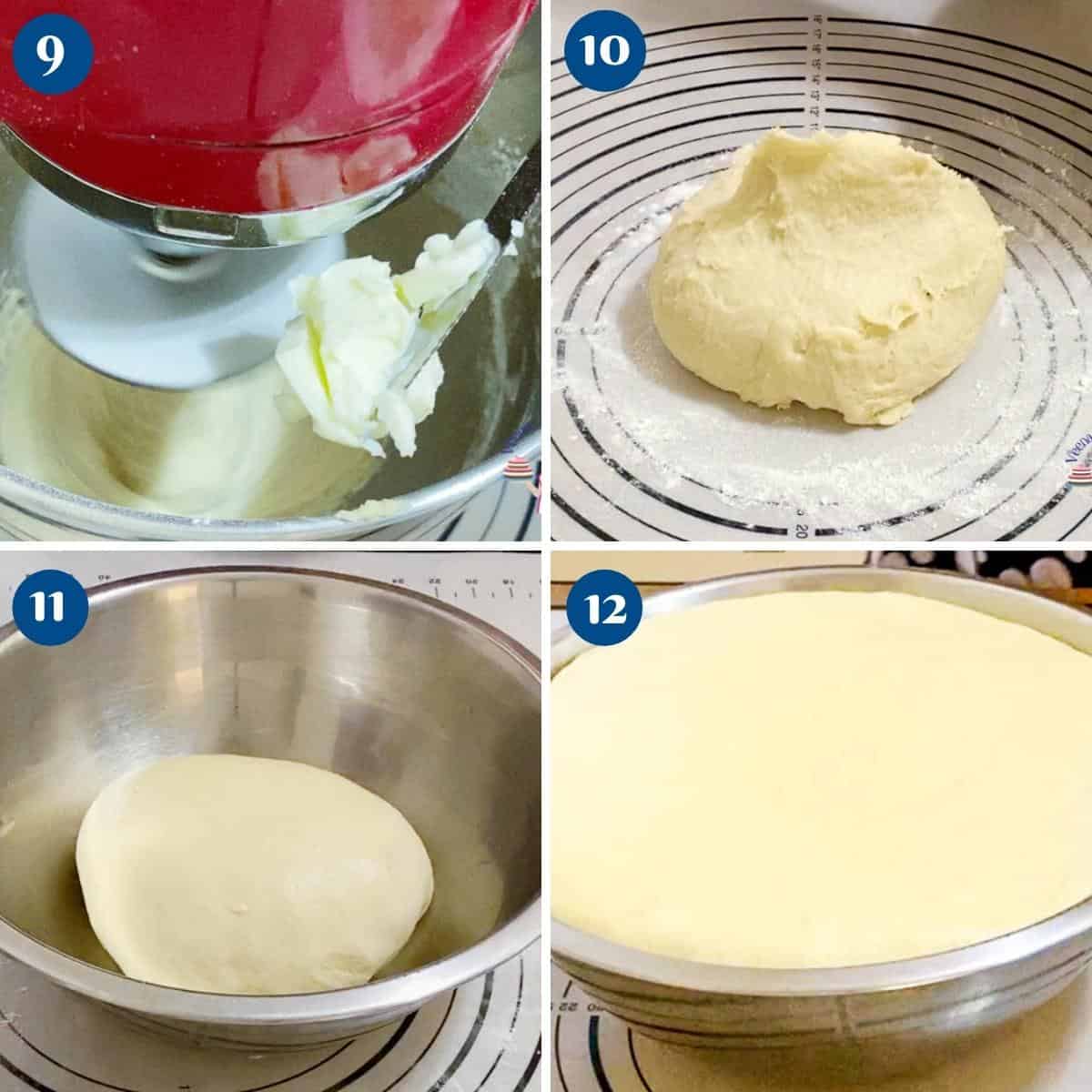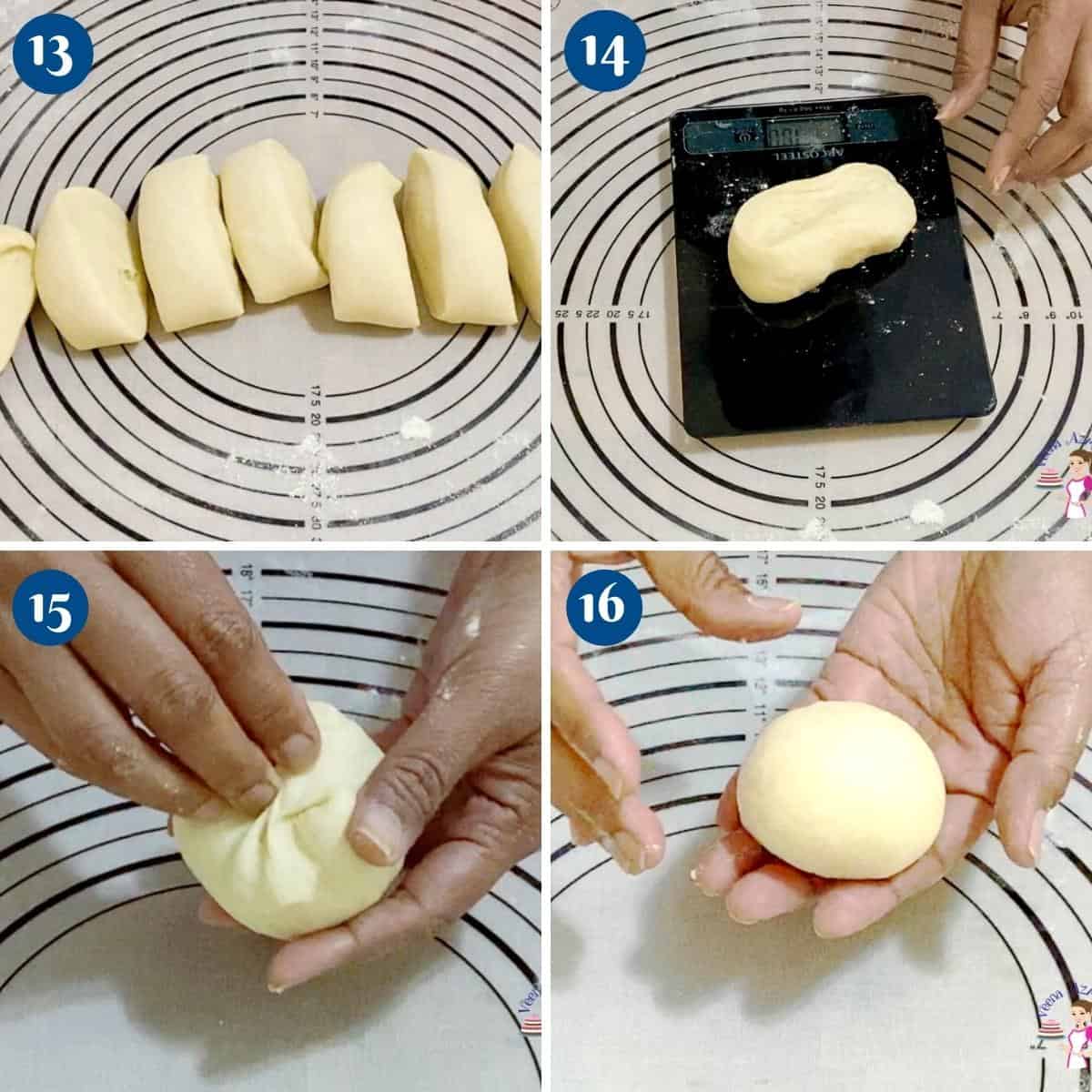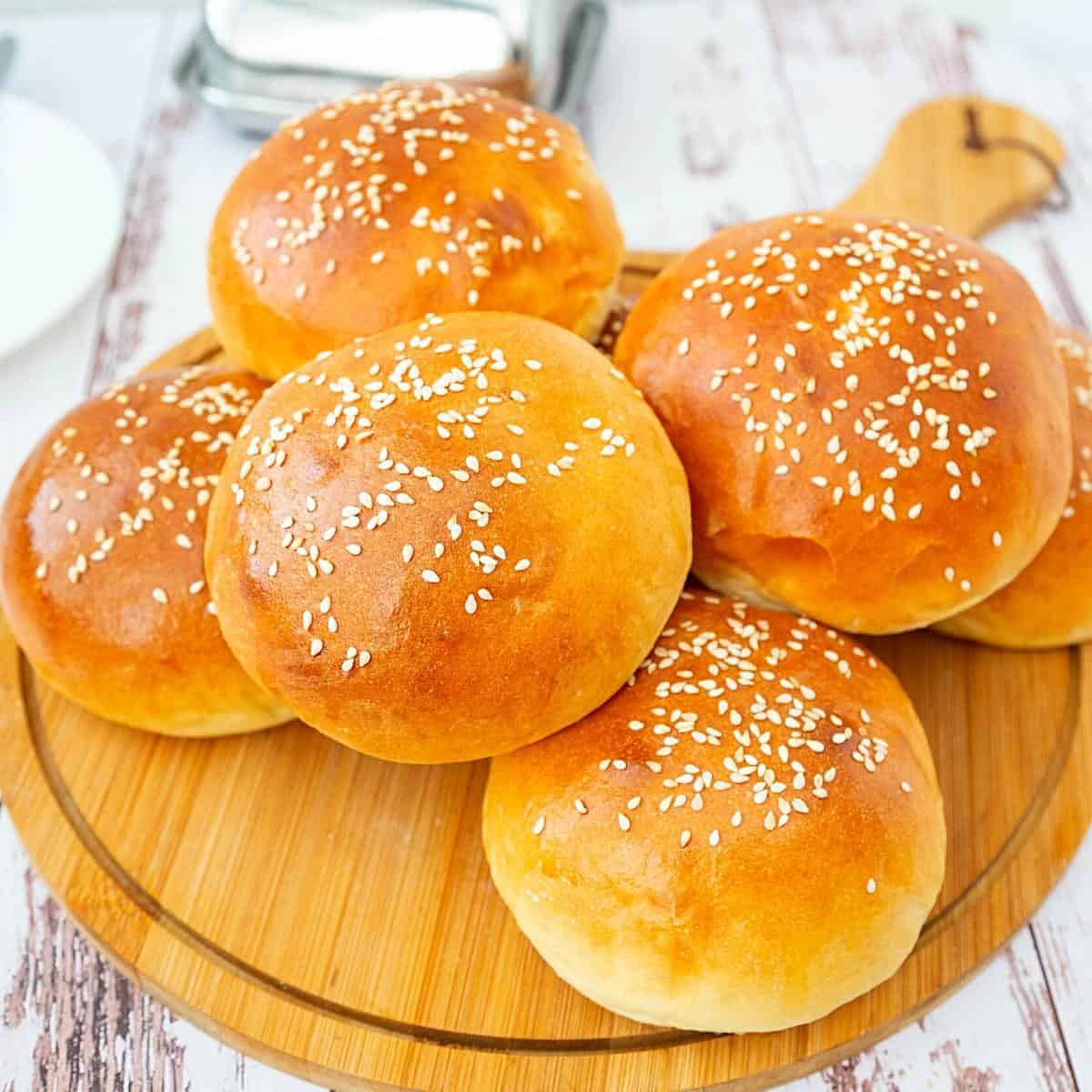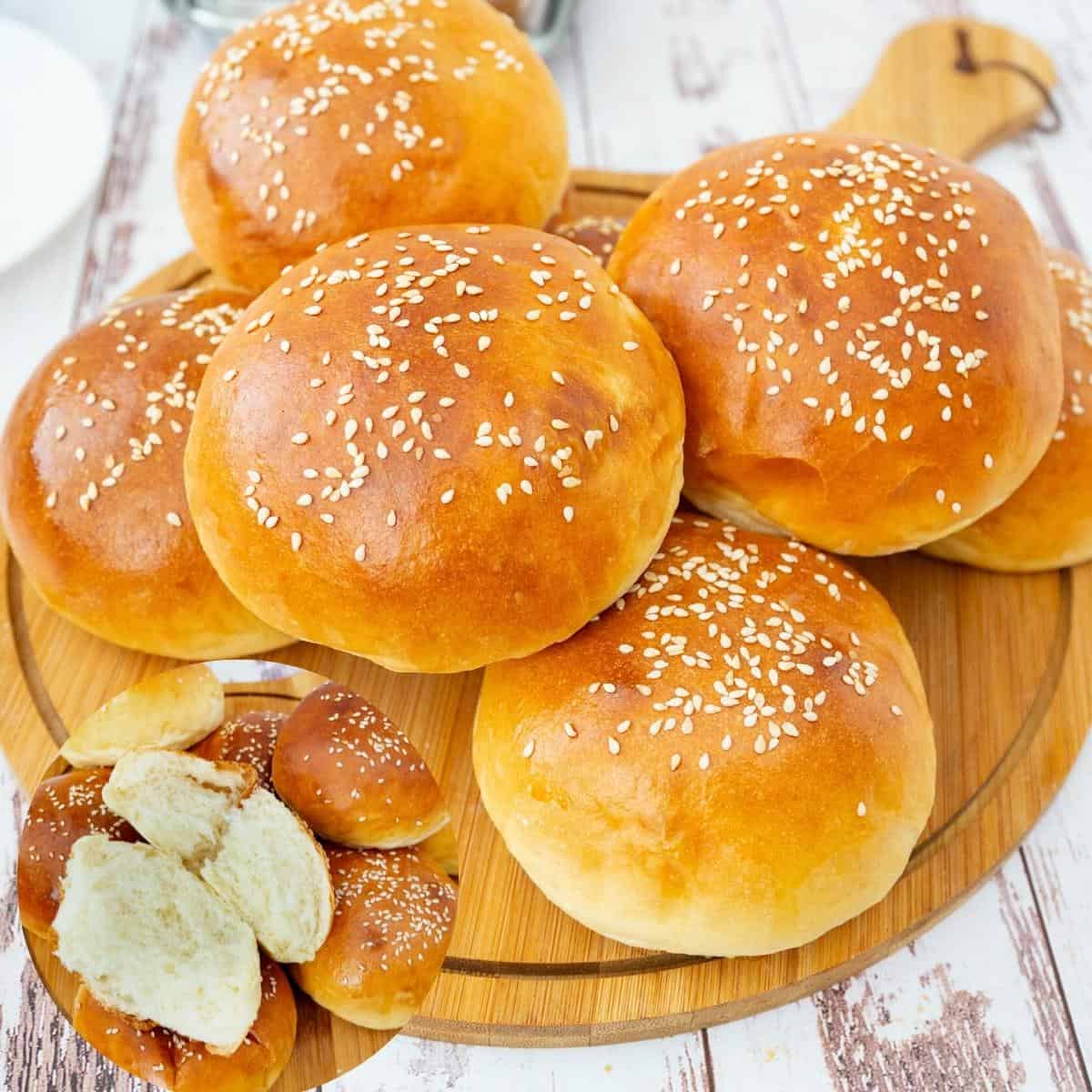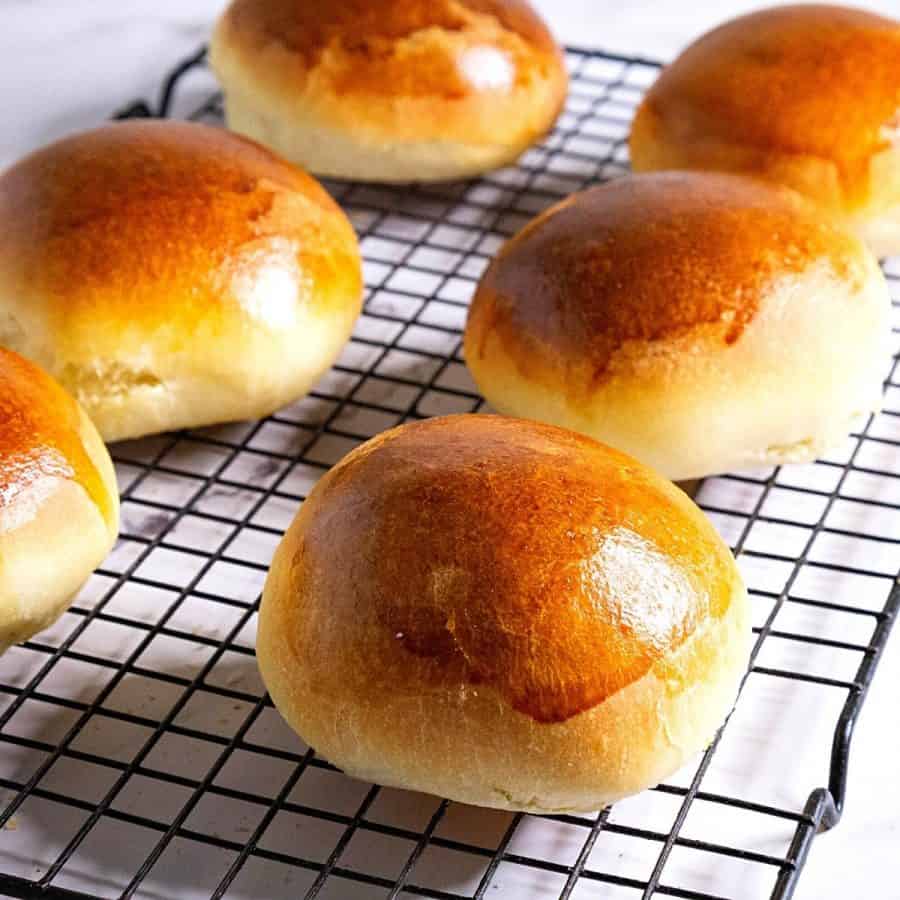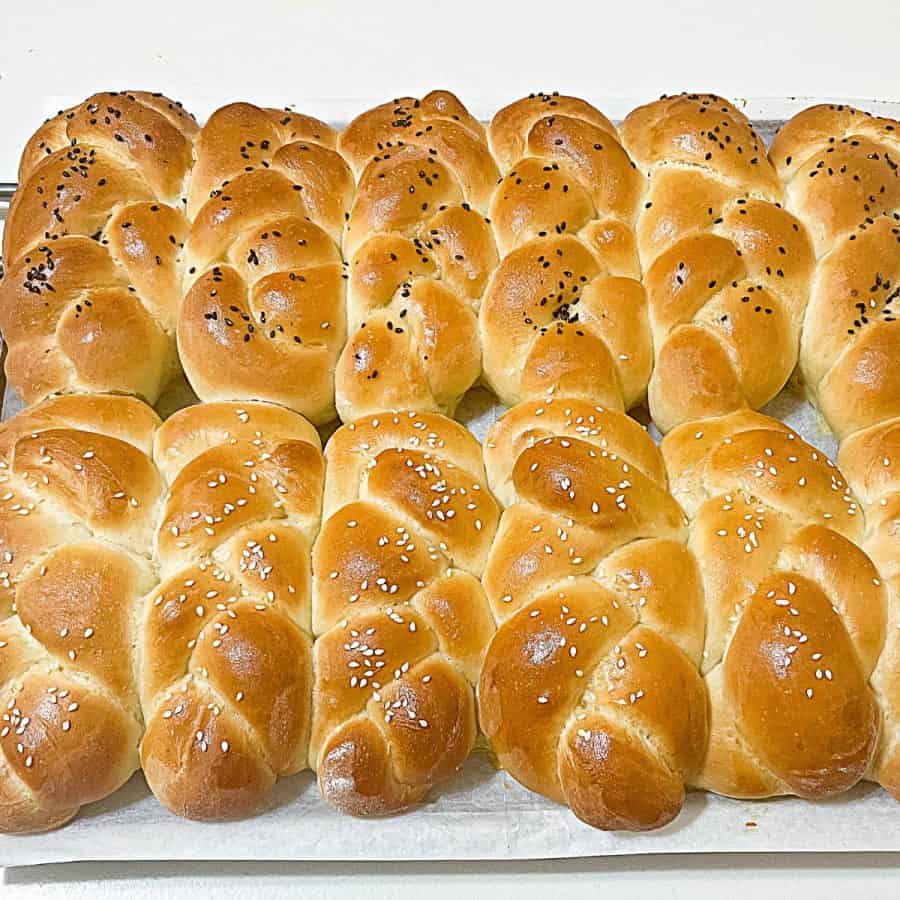Have you ever tasted the Japanese milk bread Hokkaido? Back when I traveled, every single trip to Japan, I’d buy a slice of bread and bring it back home to Singapore. I always wondered how they got the bread to be so soft, soft like cotton. For a long time, I thought it was bread flour. But, no, it’s the technique. They use what is called a tangzhong.
Why make these buns?
The recipe is very simple and easy with one additional step compared to all other bread. That’s preparing the tangzhong. But, that too is very simple and easy. It takes no more than 3 minutes for the whole process. This process makes the lightest, airiest, and softest buns everyone will be impressed with. These buns are perfect for everyday use and leftover freeze beautifully. While perfect for hamburgers these are all-purpose buns – Delicious on their own or, serve for breakfast with butter and jam. Alongside the main course for lunch or dinner. Of course, these also make the most amazing sandwiches and burgers!!
Step-by-step: Softest hamburger buns
Tangzhong
In a saucepan, combine water and flour with a whisk until no lumps. Add the milk and combine well again.Pro tip – It is very important to make sure you have no lumps as these will be difficult to remove from the dough. Place the saucepan over medium heat and cook this mixture for 2 to 3 minutes. Keep stirring constantly to prevent lumps.Pro tip – Keep the heat on medium to low. At first, the mixture will take a while to thicken, but then it does get thicker quickly. So, keep a close eye and take it off just when it reaches almost paste consistency similar to a pudding. Take it off the heat and transfer it into a bowl or plate. Cover and let cool to almost room temperature. Make sure the plastic touches the surface of the tangzhong to prevent skin.Pro tip – Removing the hot pan will prevent it from cooking further as we don’t want it to get lumpy.
Dough
Yeast mixture – In a bowl of a stand mixer – add the lukewarm milk (no warmer than 110 F) and the yeast. Combine well with a whisk. Then, add the sugar, milk powder, egg, and cooled tangzhong. Combine – Add the flour and salt. Combine well on medium-high speed for 2 to 3 minutes until all the flour is well incorporated.Pro tip – scrape the sides of the bowl well to ensure all the flour is well incorporated and do not add more flour unless necessary. Knead – Continue to knead on medium speed for 8 to 10 minutes. Then, add the butter and continue to knead for 5 to 8 minutes more until you have a soft, smooth, and elastic dough.Pro-tip – avoid the temptation to add more flour. We want soft, light, and fluffy rolls, and this is only possible when the dough is soft, elastic, yet slightly sticky
Bowl – When the dough is soft and shiny, but still slightly sticky shape it into a ball. Place the dough in an oiled bowl seam side down. Coat the surface with oil to prevent drying. Cover with a clean kitchen cloth or plastic wrap. Rise – Leave in a warm place. Let rise for 60 to 90 minutes until it doubles in volume.Pro tip – In winter, you may need 90 minutes or more. But in summer, the dough may double in 45 minutes. And if you can’t attend to it at that moment, de-gas, reshape, and let double in volume again.
Punch – When the dough is doubled in volume, transfer it to a well-dusted floured surface. Punch down and reshape into a ball. Then, roll it into a small log.Pro tip – At this point, there is no need for additional flour. So use a light dusting of flour. Divide – Using a dough scraper divide this log into smaller portions. You can make 8 buns x 100 grams each or 12 smaller buns x 60 grams each (similar to dinner rolls).
How to shape hamburger buns
Hold each piece of dough in your hand and gather all the seams together. Pinch the seams at the bottom then place the ball on a non-flour surface while still holding it in your hand.Pro tip – The un-floured surface creates the tension we need in the dough. Loosen the grip on the dough and roll it back and forth into a tight circle against the work surface. You will feel the dough become tight and smooth.Pro tip – The goal is to create a tight, smooth ball. If you overdo the rolling, you will rip the top surface, which will give a rough, not smooth roll. Tray – Place the buns on a baking tray leaving enough room to rise and spread. Once you place the ball on the baking tray – flatten it with your fingersPro tip – Flatten it will give us that bun not ball shape as it proofs and bakes.
Proof and bake
Proof – Cover with a clean kitchen cloth or plastic wrap and leave in a warm place for about 45 minutes until almost double in size.Pro tip – Spray the plastic wrap with oil to prevent it from sticking to the rolls. Oven – When the rolls are almost double in volume, at about 30 minutes, preheat the oven to 375°F /190°C / Gas Mark 5. Brush the buns with egg wash, milk, or cream. Sprinkle with sesame seeds or poppy seeds (optional).Pro tip – Egg wash is a full egg with 2 tbsp of water. An egg wash will give a nice golden color. If you can’t use egg, milk or cream will work just as well. Do not use oil or butter as it will create a crust. Bake for about 22 to 25 minutes until lightly golden on top. When baked, brush with melted butter.Pro tip – If the tops are getting too dark, tent them with aluminum foil. Brushing with butter is optional but adds a nice flavor and keeps the top crust soft. Cool – Take them out of the pan and cover them with a clean kitchen cloth for at least 5 minutes to keep them soft.Pro tip – Do not leave the rolls in the pan for too long as the steam will make the bread soggy on the bottom. Enjoy!
Creative variations
Seeded Buns: Add a variety of seeds such as sesame, poppy, or sunflower seeds to the dough before baking for added texture and flavor. Cheese-Stuffed Buns: Place a small cube of cheese (such as cheddar or mozzarella) in the center of each dough ball before shaping. The cheese will melt during baking, creating a gooey, cheesy center. Herb-infused Buns: Add dried herbs such as rosemary, thyme, or oregano to the dough for a savory twist. Spicy Buns: Mix in some finely chopped jalapeños or red pepper flakes to the dough for a spicy kick. Whole Grain Mustard Buns: Add a tablespoon of whole grain mustard to the dough for a tangy flavor. Onion Buns: Mix in some caramelized onions or onion powder to the dough for a sweet and savory flavor. Garlic Parmesan Buns: Add some garlic powder and grated Parmesan cheese to the dough for a flavorful twist. Pumpkin Buns: Replace some of the water in the recipe with pumpkin puree and add some pumpkin pie spice for a seasonal variation.
Creative ways to use burger buns
Slider Trio: Serve mini burgers (sliders) on whole wheat buns with a variety of toppings, such as caramelized onions, avocado slices, and different types of cheese. Open-Faced Sandwiches: Use the whole wheat buns as a base for open-faced sandwiches. Top with ingredients like smoked salmon, cream cheese, and dill for a tasty snack or light meal. Breakfast Sandwiches: Use the buns to make breakfast sandwiches by filling them with scrambled eggs, cheese, and bacon or sausage. Pulled Pork Sliders: Fill the buns with pulled pork and coleslaw for a delicious and satisfying meal. Vegetarian Options: Use the buns to create vegetarian burgers or sandwiches. Fill them with grilled vegetables, hummus, and avocado for a nutritious and flavorful meal. Mini Pizza Buns: Use the buns as a base for mini pizzas. Top them with tomato sauce, cheese, and your favorite toppings, then bake until the cheese is melted and bubbly. Bread Pudding: Use the buns to make a savory bread pudding. Cut them into cubes and mix them with eggs, milk, cheese, and vegetables, then bake until set. Bread Crumbs: Toast the buns, then blend them into bread crumbs. Use the bread crumbs to coat chicken or fish before baking or frying.
Burger Buns – Hamburger Buns, or Soft Whole Wheat Burger Buns Homemade Soft Brioche Buns or Homemade Hawaiian Rolls Hot Cross Buns or Soft Dinner Rolls, Whole Wheat Dinner Rolls Homemade Chicken Burgers or Turkey Burgers Recipe Best Juicy Beef Burgers
Frequently asked questions
Thank you for sharing - Save for later
Well, the water is absorbed by the flour at a high temperature and the starch is gelatinized without forming any gluten (that is why it must be cooked carefully). This allows the starch in the tangzhong to absorb far more liquid at room temperature later. That’s why when tangzhong is added to the dough, we can use more water, which in turn gives us a soft, stable yet spongy texture in the final bread. Did you know you can add tangzhong to any bread to improve its consistency and texture? Yup! Today, we make hamburger buns, but you can use this to make almost anything. For example, try my softest shokupan sandwich bread, dinner rolls, or even cinnamon rolls.
